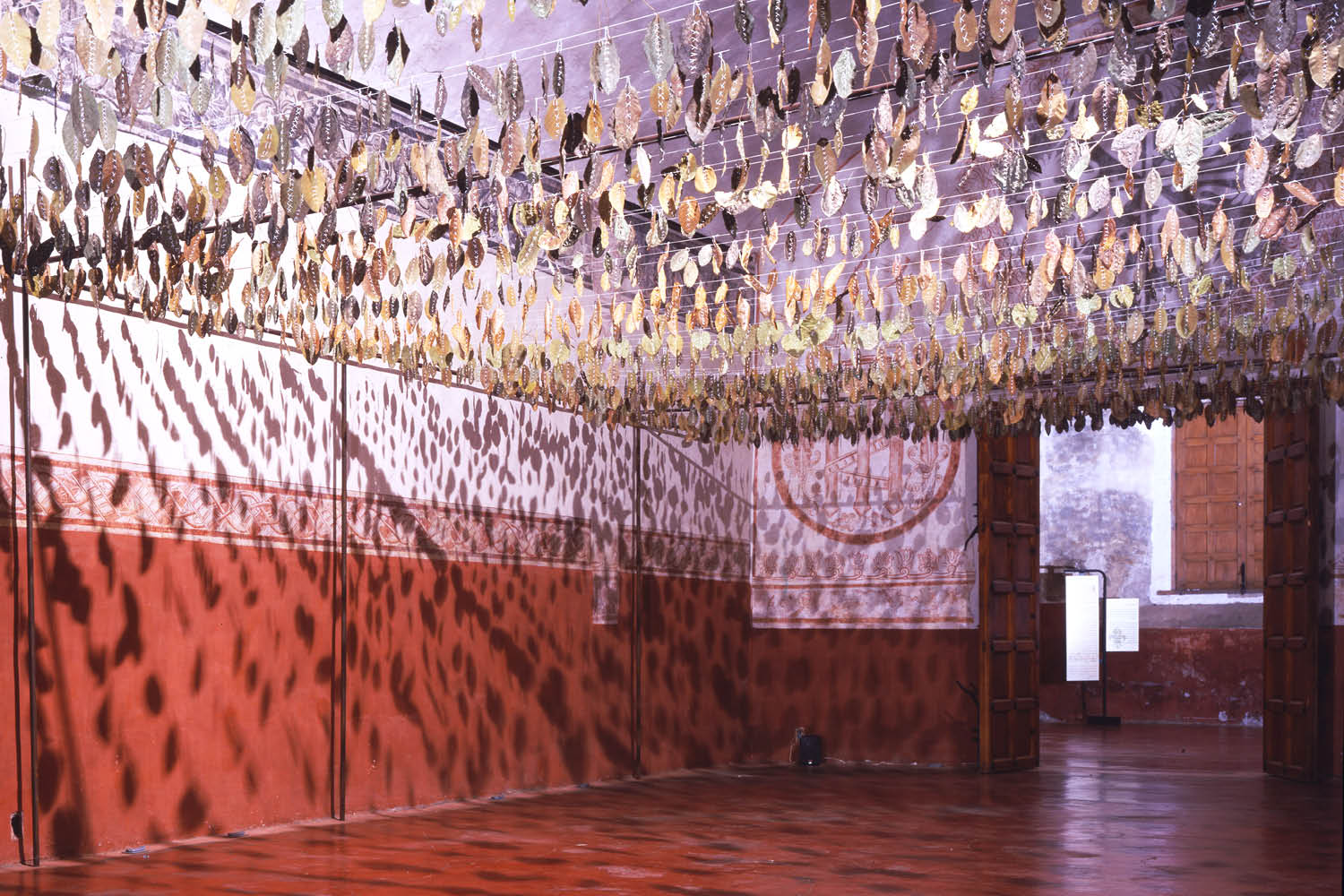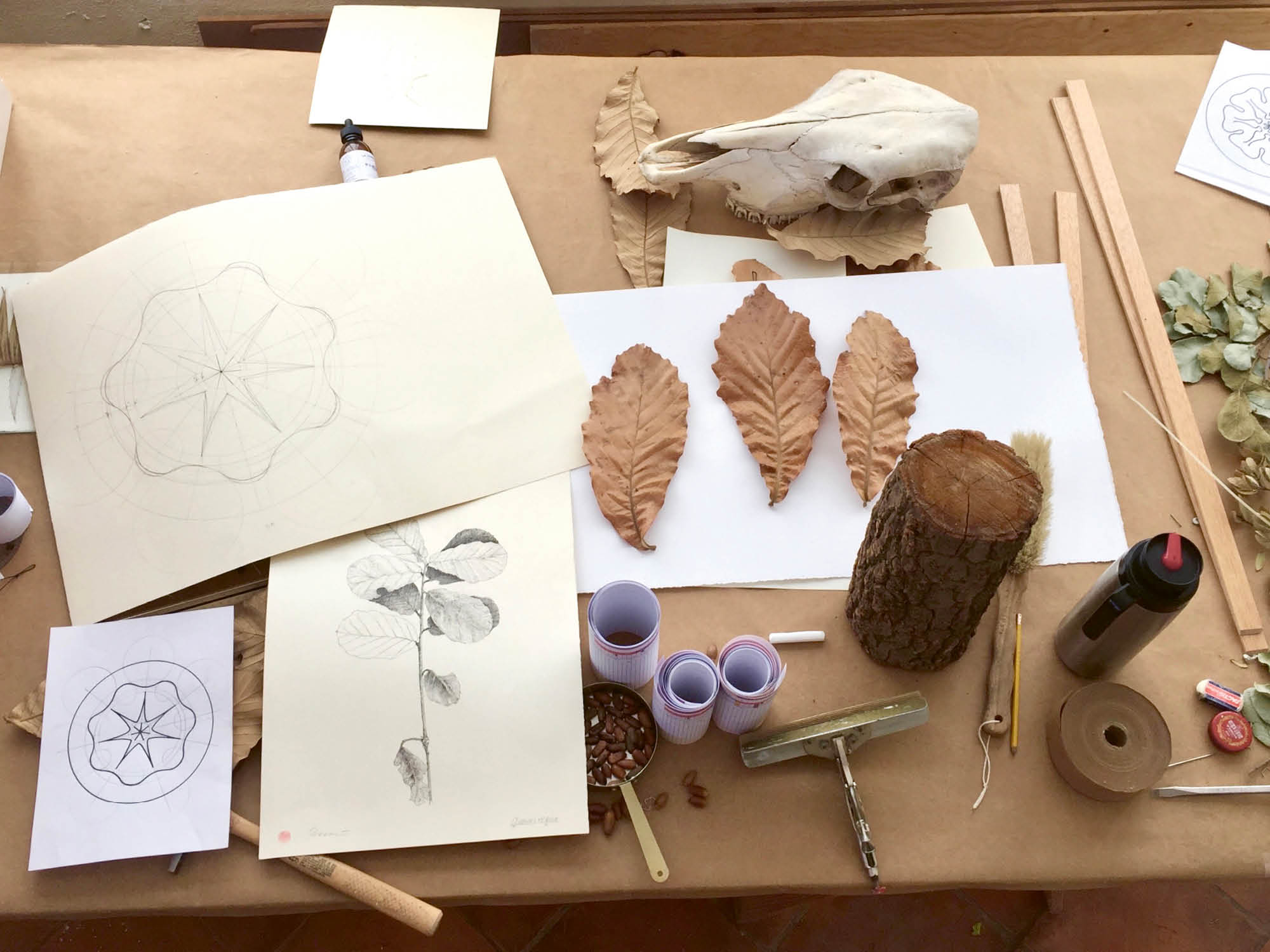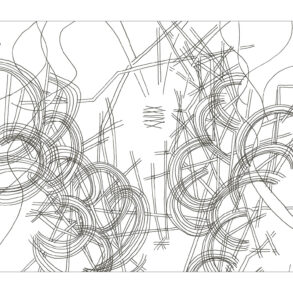When art helps us deepen our understanding of nature, art becomes research. Eduardo Rincón, co-leader of the Agriculture Section, engages artistically and scientifically with his objects of study and talks about his oscillation between the two. He tells his story with science and art.

We grew up on a large farm in the high desert in central Mexico. My brother and I could ride the horses to the horizon and sleep there and have fires and watch the stars. It was very, very inspiring to go to nature and find the beauty and look for the answers to those big questions that we all have as young people. I thought I could find this passion for nature in biology, inspired by the work of many naturalists. I went into science thinking I would find it there, and at the beginning, I was very happy. Biology is amazing. During my studies, I worked in three laboratories, first in biochemistry and then in one with the beautiful name of The Origin of Life Laboratory. I thought, okay, this is it; now we’re going to find out how it all began. But it was very cold for me. We were studying something really beautiful—layered sedimentary formations like stromatolites—but I thought we were not even asking the question, “What is life?” So, I moved to tropical plant ecology. I studied plants in the tropical forest for seven years, and I was happier. The living interactions between all levels of animals, plants, and other beings are only equaled by the coral reefs. There is no mathematics capable of really understanding these highly complex interactions. I needed another way. At home as children, we were taught to draw like you are taught to eat with a fork. If you were explaining something to my mother, she said, “I don’t understand—can you draw it?” During my studies in the tropical forest, I did a lot of drawing and even made some money with scientific drawing.
Then came my first really big crisis. One day, I was in the forest studying the distribution of land ferns. I had a fisheye lens, a 360-degree lens, and I was taking pictures of the sky because in the tropical forest understory, light is a limited resource. The trees form what’s called a forest gap, which changes seasonally because trees fall down in storms and open gaps in the canopy that create the forest dynamics. If you look at two hectares in a flatland with no plants, it’s not that big. But in a place full of dangerous animals and deadly snakes, with an irregular volcanic floor, making a census in two hectares of land is quite challenging. I was trying to assess the distribution of ferns, and I looked at the photograph of the forest gap, and I said: I will never really understand what is happening through these methods. I was very sad and scared because I’d thought science could explain everything. This crisis me to go to art. I thought, “I have to find another way of trying,” and this became my methodology.
So I decided not to do my master’s degree in conventional science (I did my master degree in phenomenology and art years later) and I started working as a professional artist. I painted the tropical forest for many years and exhibited in galleries. Somebody in a gallery once asked me, “Aren’t you a scientist? You cannot mix art and science.” So I decided to mix them and asked, who has done this before? And I found Goethe. He had the ability to work in the science world and in the art world. Finding him changed my life.
The Amate
Fig trees (Amate in Mexico) can grow really, really large on the American continent. I wondered, why are these trees here? How many species are there? Why are they so beautiful? I started compulsively collecting fruits of these figs until my studio was full of bags of them. My wife asked, “Why are you collecting the fruits of this tree?” I said, “I don’t know, but I have to do it.” Then the answer started coming. It turns out that the inner bark of this tree, the Amate, had been used for centuries to make paper. The ancient Mexicans used to write their history on codices made out of paper from this tree.
So, I started a historical analysis of the tree. I found out there were seven species. I started an art and science collective. I called a friend of mine who’s a taxonomist, and he made taxonomical descriptions of the trees. Fig trees in certain regions are related to rocks and usually grow on top of rocks or on the walls of ravines in river basins. They also have a very strong relationship with a lot of animals, like bats, birds, and rodents. I started drawing and describing the plants. When you do a drawing, you have to really look in detail at the plant to capture its shape as exactly as possible.
Then, the next step occurred to me. Even before the Spanish came to Mexico, these trees were being cut down to make paper, but then after the Spanish arrived they were cut down even more, so now they are endangered species. I thought, what can I do to create a gesture that makes people conscious of this, but at the same time heals the history? I chose to do an art installation in an ex-convent from the 16th century that is in Tepoztlán, one of the centers where these trees grow. This place was also used as a fort because the indigenous people attacked here. I thought, “There has been so much damage, so much sadness, so much killing of the trees and the people, why don’t we germinate something?” As a biologist, I took Petri dishes and collected thousands of seeds—that’s why I wanted the fruits and seeds. I found a methodology to germinate them because they have a lignin coat that must go through the digestive system of certain animals, like bats before they can germinate. I put the fig seeds inside the Petri dishes and put 7,000 of these dishes inside the ex-convent to germinate. We wrote and recorded music to play all the time to enhance the germination. There was a collective of many people helping me. Imagine just watering these things! In the other room I hung 7,000 leaves, 1000 from each of the species, that I’d given to my friends to cross stitch. It was just a symbolic way of healing the past and future of the plant, but a lot of people were involved.

The exhibit lasted three months. About 350,000 trees germinated from the seven species. I did a lot of tests on germination, and I published the results. But what to do with the trees? I donated half of them to the municipality for reforestation. I kept the other half, and we started a reforestation project. We consulted the University to find the best regions for planting them, and we had reforestation campaigns with children from public schools in Mexico.
The Oak
Mexico has the highest diversity of oaks in the world. We have oaks that grow in the sand on the coast, we have oaks 3,000m above sea level, and we have oaks in the deserts—it is a very important plant for Mexico, and it is also endangered. What do we do with this diversity in relation to the biodynamic oak preparation? That was my question. So I embarked on another reforestation project, but also on a project to understand the relationship between the oak and our civilization. In many places of the world, oaks represent strength and power. The oak has a relationship with Mars, the moon, and so many other things. What happens to a country that cuts all of its oaks?
The view from my farm in Mexico shows a flatland. It used to be all oak forest. Now, they call it the high desert. But it was not high desert, it was an oak-pine forest. Now you only see a few oaks up there. My son, who is a writer and a filmmaker, and I started working on this project together, up in the hills, where there is a beautiful sanctuary from the ancient Mexicans called The Sacred Oak—well, not exactly, but let’s translate it like that. Palo Huerfano, the Orphan Oak, was a huge oak that grew there. About 100 years ago, it was struck by lightning and died. My first idea was to look for its ashes so I could do some alchemical work. Instead, I found the successors of these trees. Twice a year there is a pilgrimage of the local native people that live around my town. They go up the mountain twice a year to perform rituals. That strengthened my questions: “What is the relationship of these oaks to the region and to the traditions of the ancient people? Why do they do this? How is it related to the biodynamic prep 505?”
I started doing an analysis, and funnily enough, I also found seven species around the area where I was working and farming. I started modeling an experiment in my head: how can we try these seven species for the preps? I began the project like I did before, working with taxonomists and other scientists, making the botanical descriptions. I always made an exhibit with painting, drawing, and sculpture, and invited the public. I gave talks about the biodynamic prep and the oaks in Mexico during the exhibit. Last year, during the Agriculture Section conference, I invited people to take three acorns from the central European oak Quercus rubor back to their countries. I took mine and germinated them in Mexico. It was also another gesture of germinating the next hundred years of biodynamics by planting three seeds: for the renewed will, thinking, and feeling.

I started using the different barks and doing a phenomenological study of them, seeing how they differ in color, taste, texture, and many other qualities. We ground the bark and we made tea and tasted it. We see in the leaves how impressively diverse the oaks can be. We started really studying the differences between them. I’ve done two art exhibits and made trials with the preparations. A lot of people are involved. I always call on people from the science world, the art world, the anthroposophical world. We keep discussing and thinking about these things so that people from all walks of life can step into a place and experience what this is. During our courses in biodynamic agriculture, we always invite artists and eurythmists so we can experience this.
At the beginning of my career, it was very shocking—when those fisheye lens pictures of the forest sky went into the computer, and I saw the results, I felt no connection to them. I thought, “Anybody who sees this will have absolutely no connection to the distribution of the ferns,” When you are inside the tropical forest, in the river, in the mountain, on the slope, you see why the ferns are distributed differently because you perceive it in you—you feel it. And this was lost. I thought, “Art can bring both things together.”
I think we all are artists. If we work with art, something from us, from the way we are trapped in the material world, will loosen itself from that attachment and actually open something. It is a big question, whether we think that research is too removed from the practical work in the field of the farmer. But, if we bring art to the farmers, maybe they can become researchers, and maybe they can have dreams and images in their hearts that help them deal with the challenges of farming every day. We should never underestimate the power of this. After all, we should all be moving towards imaginative thinking. I think art can really help us in this transition to get the materialistic bull by the horns. So, this has been a glimpse of methodologies that I use to awaken myself to see something above the abstract way of understanding life. Thank you very much.
This is a shortened and lightly edited version of the talk given at the conference.
More Natural Science Section: Evolving Science 2024
Title image Eduardo Rincón’s desk









